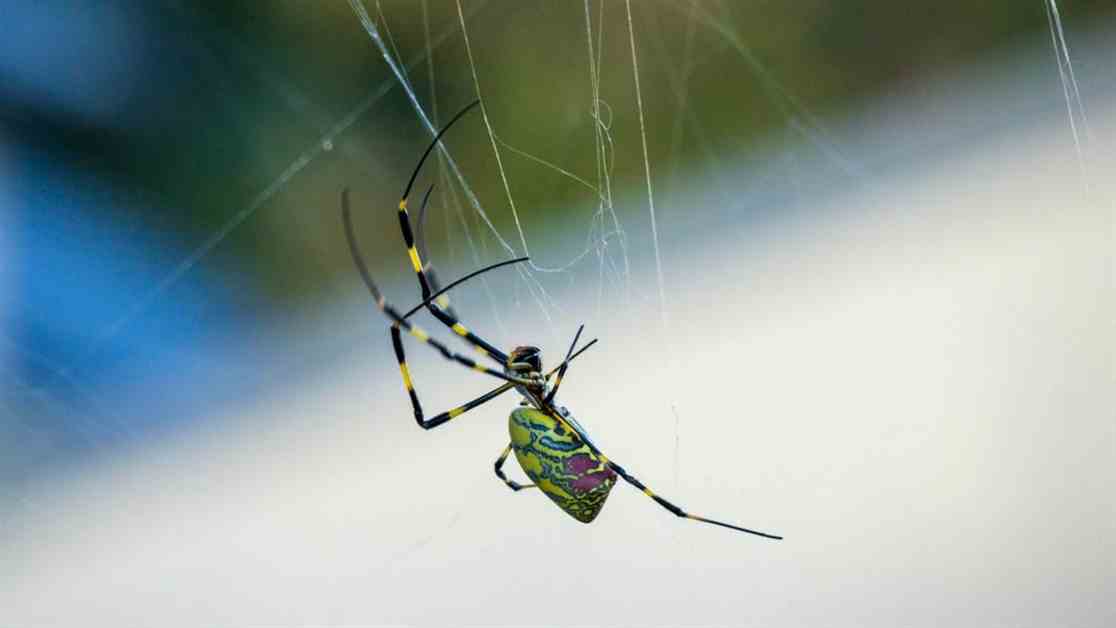Will Giant Flying Spiders Really Invade New York? The Joro Explained
Topline
Concerns of venomous, palm-sized spiders landing in New York and other east coast cities has captured the worried attention of some arachnophobes in recent days, as headlines suggest they could be on their way this summer, and though it’s possible that could happen, the spiders have yet to make an appearance in urban Northeastern cities after entering the U.S. around 10 years ago. The Joro spider hails from Asia.
Key Facts
– The Joro spider—known for its yellow and gray coloring, four-inch-long legs, and venom that only poses a threat to other insects—is spreading faster to the north than the south, according to a November study from Clemson University.
– The arachnid could appear in New York and neighboring states as early as this summer, The New York Times reported in December, citing University of Georgia researcher Andy Davis, who said it was a matter of “when, not if.”
– By far the lion’s share of sightings so far have been in Georgia, followed by neighboring South Carolina and Tennessee, though reports have also recently popped up of sightings in Maryland, just north of Washington, D.C., according to a University of Georgia tracker.
The spider poses no danger to humans, though it is an invasive species to the U.S., with prey including bees, butterflies, wasps, grasshoppers, cockroaches, beetles, and other spiders. The Joro is also one of the “shyest” spiders “ever documented,” according to a 2023 University of Georgia study, which noted it responded to harmless disturbances by freezing for more than an hour—an “unprecedented” amount of time for a spider. Once the Joro spider makes its way to an urban environment like New York City, it likely won’t run into any issues adapting to it, as researchers at the University of Georgia have found the arachnid has some tolerance to noise and stress and observed webs on telephone poles, street lamps, and traffic signals next to busy roads. A significant part of the Joro spider’s spread is its ability to fly by releasing silk that catches wind currents, allowing it to conduct non-precise flight guided by the wind. The spider’s bite is comparable to a bee sting, Davis told the Times, noting he’s handled about 500 of the arachnids and that they will not try to bite a human unless provoked.
What We Don’t Know
Though several articles about the Joro spider’s pending arrival in New Jersey and New York have popped up recently, it still remains unclear when a considerable number of the arachnid will reach the two states. While researchers have predicted a summer arrival, New Jersey Pest Control said in a January blog post it expects the spider will potentially reach the state “later this year.”
Key Background
The Joro spider is from Asia and is suspected to have reached the U.S. around 2013 through a container ship from Japan, China, Taiwan, and/or Korea bound for Atlanta. In the southeastern U.S., peak spotting times for the spider range between August and October, according to the University of Georgia, which noted the spider is most easily found along forest edges and trailsides.
Tangent
The Joro spider is one of multiple invasive species to make headlines in the U.S. Spotted lanternflies from southeast Asia—which Joro spiders eat—have increased in numbers since arriving in the U.S. around 2014, provoking officials to wage a public awareness campaign asking Americans to stomp the insect, which feeds on and kills crops. Though not invasive, cicadas have also emerged across the U.S. recently, prompting noise complaints and bringing a mix of issues and benefits to the environment.
Further Reading
– What’s Shy, Has Eight Legs and Eats Spotted Lanternflies? (NYT)
– Giant venomous flying spiders with 4-inch legs heading to New York area as they spread across East Coast, experts say (CBS)









